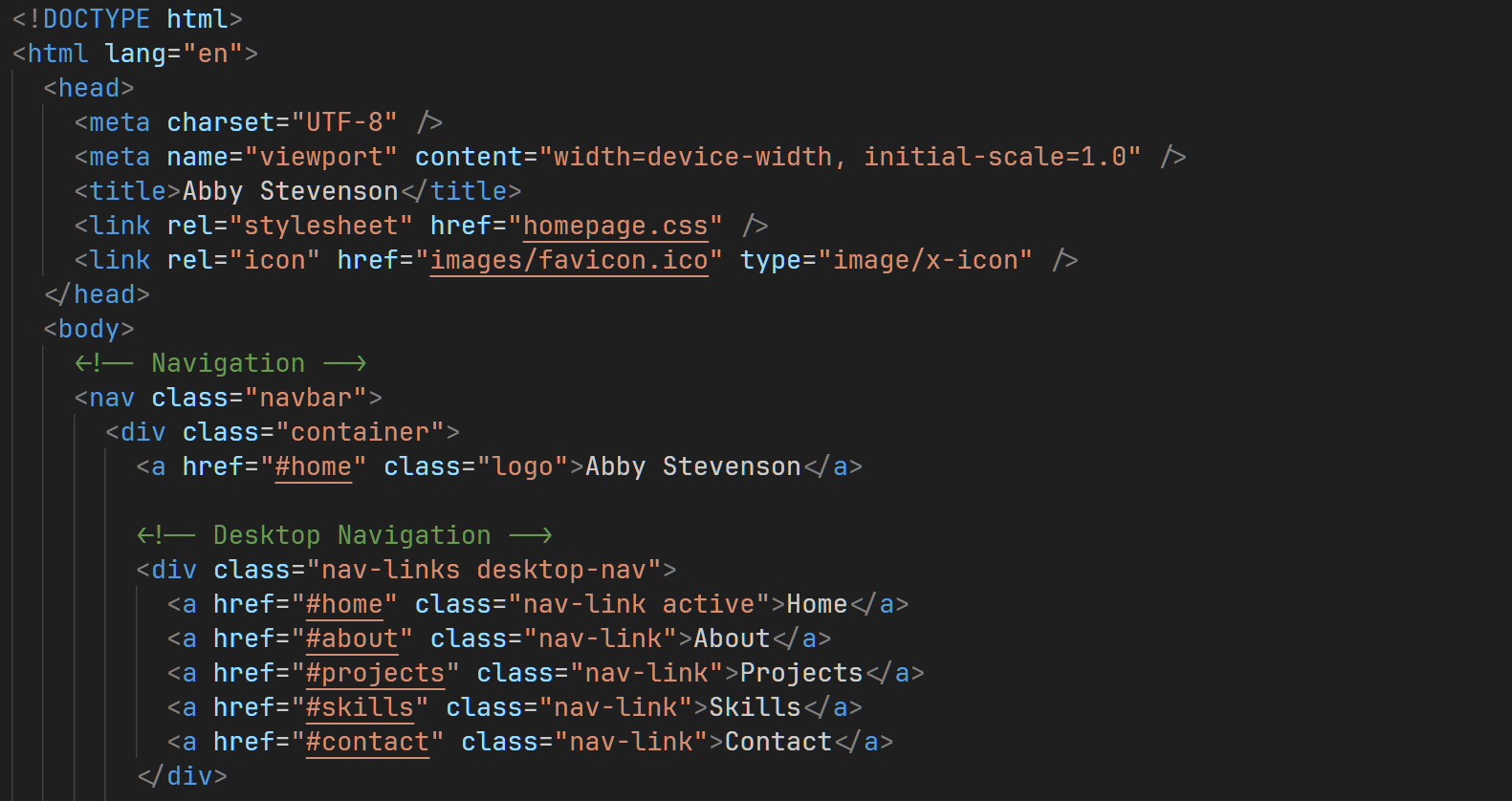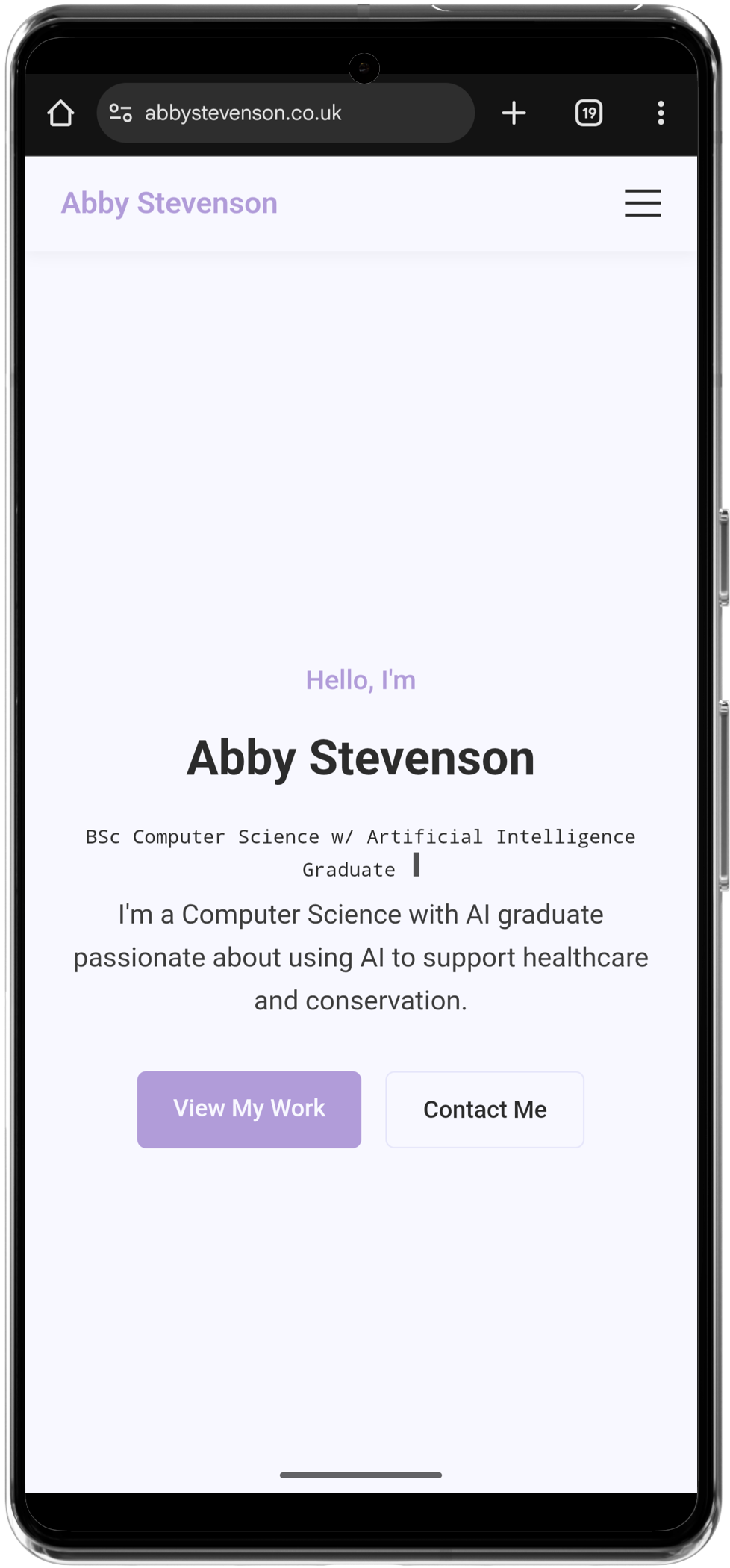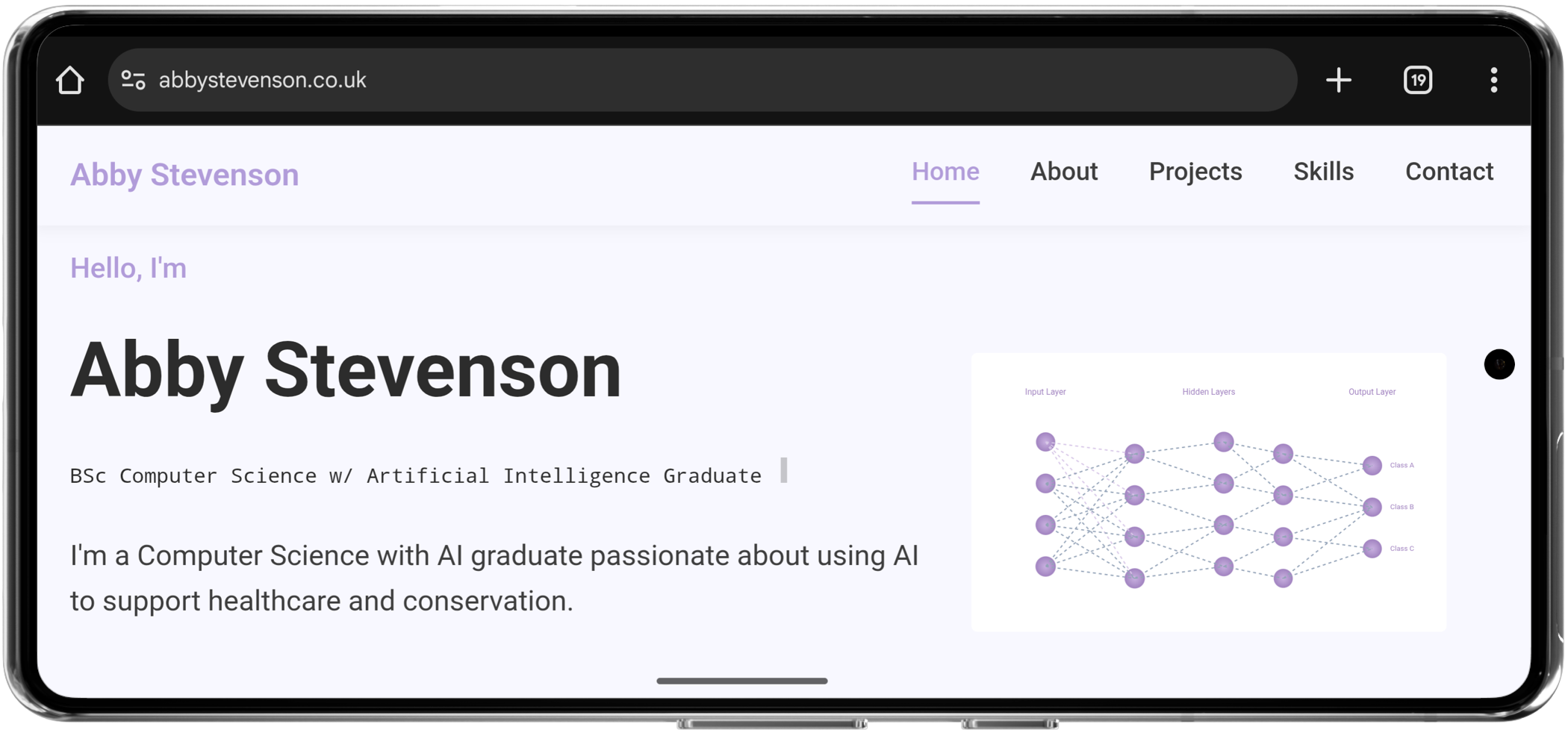Project Overview
This site is my personal portfolio, a place to share my work, background, and the things I care about in AI and development. I built it to be simple, clean, and something that shows what I can do while remaining approachable and user-friendly.
It's responsive, lightweight, and designed to work smoothly across all devices. I made sure it is accessible and fast, with just enough interactivity like scroll animations and typing effects to make it feel alive without being overwhelming.

Screenshot of the HTML code for my portfolio website in VS Code.

